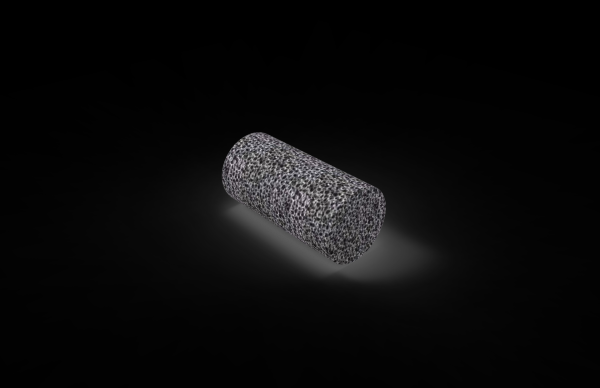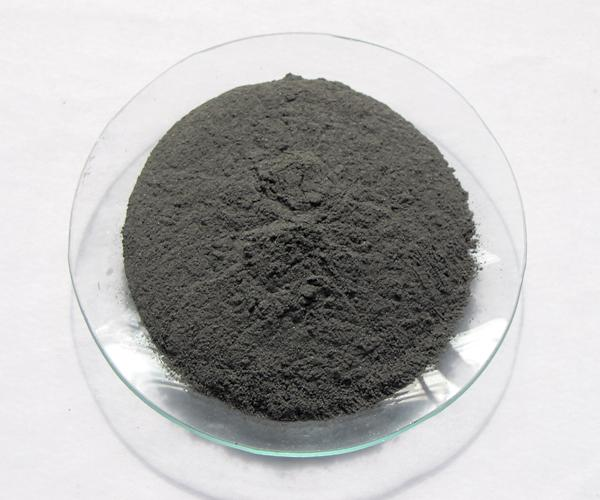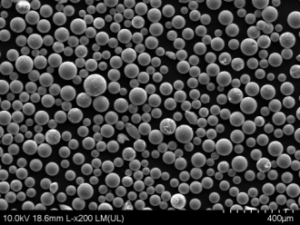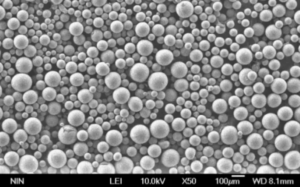タンタルは金属元素であり、鋼灰色の金属のモノマーに相当する元素である。この元素は、低温でも高温でも極めて耐食性が高く、塩酸、濃硝酸、アクアレジアにも反応しない。

タンタルは主にニオブと共生するタンタライトに含まれる。タンタルは適度に硬く、延性があり、フィラメントタイプの薄い箔に引き抜くことができる。熱膨張係数は非常に小さい。
タンタルは化学的性質に優れ、耐食性に非常に優れている。蒸発容器などに使用できるほか、電子管、整流器、電解コンデンサーの電極としても使用できる。
医療用には、損傷した組織を修復するための薄いシートや細いワイヤーを作るためにタンタルが使用される。タンタルは耐食性に優れているが、その耐食性は、表面に五酸化タンタル(Ta2O5)の安定した保護膜が生成されるためである。
これらの特性に加えて、タンタルは化学的腐食に非常に強く、還元状態でも酸化状態でも有害な生物学的反応をほとんど引き起こさない。タンタルの優れた生体適合性は、骨外科を含む様々な用途において、数多くの研究によって確認されている。その生体適合性から、タンタルは80年以上にわたって臨床研究に広く使用されてきた。
タンタルは1940年に初めて整形外科で使用され、チタンに次ぐもう一つの新しい生体材料となり、口腔インプラント埋入、大腿骨頭壊死治療、冠動脈ステント埋入、人工寛骨臼埋入、手術用縫合糸製造などの医療関連分野で広く使用されている。純粋なタンタルがヒトのインプラントとしていかなる有害反応も経験していないことは、多くの文献で確認されている。
最も優れた生体適合性材料の1つであるタンタルの生体適合性は、従来の医療用金属材料とは異なり、移植後一定期間が経過すると、生体組織が実際の骨と同じようにタンタル上に成長するという事実によって実証されています。このため、タンタルは「プロメタル」とも呼ばれています。

また、タンタルは良好な骨学的活性を有し、生物学的に活性な骨材料界面は結合組織層ではなくハイドロキシアパタイト層であり、タンタル金属の良好な骨学的活性と安定した生物学的不活性により、骨との強固な骨界面統合を形成することができる。
タンタルは、これらの特性のいくつかに基づいて、骨の変位を防ぐ永久骨インプラント、動脈破裂を防ぐ柔軟な足場、骨折修復、歯科など、さまざまな臨床用途に使用されている。
医療用人骨インプラント材料の選択、以前の材料の応用はステンレス鋼、ニッケルクロム合金、ニッケルチタン合金で、ここ2、3年は流行のTC4チタン合金で、これらの材料はニッケル、クロム、またはアルミニウム、バナジウムなどの有害元素を含み、その弾性率は人骨を超えすぎているため、材料と人体の親和性が低く、“骨がくっつかない“現象が発生しやすい。医療専門家と市場は、現状を改善するために、無毒、無害、人体親和性の新素材を早急に必要としている。
多孔質タンタルには、以下のような多くの利点がある。 (1)宿主骨界面との完全な統合:最も一般的に使用されているチタン金属と比較して、タンタルはより生体適合性が高く、より優れたオッセオインテグレーション能力を有する。(2) ユニークなバイオニック海綿構造:タンタルの弾性率は骨組織の弾性率に近く、他の金属よりも人体のバイオニック海綿体構造に適している。(3)骨と血管の急速な成長を誘導する 多孔質タンタルの孔に骨組織と血管組織の急速な成長を促進することができ、その高い多孔性と支持構造は、骨の成長のための広範なスペースを提供し、良好な生物学的固定を形成し、効果的に骨セメントの発熱効果と周辺組織への影響を解決することができ、臨床的に大きな進歩である。
以上のような利点から、このインプラントは臨床応用価値が高く、さまざまなサイズの整形外科用インプラントや骨欠損のさまざまな部位に適用できる。
臨床応用では、多孔質タンタル印刷は、中小サイズのすべての修復製品に適用できる。大型の補綴物については、純タンタルの高密度を考慮すると、印刷されたインプラント補綴物は重すぎるため、多成分グラデーション印刷を使用することができ、多孔質タンタルを骨成長部に使用し、チタン合金のような安価で品質の軽い他の金属を他の部位に使用することができる。
近年のタンタル材料の継続的な研究により、いくつかの臨床試験の結果、チタンや他の金属と組み合わせた医療用タンタルで作られた新しいインプラントは、生体適合性、生体活性、インプラントと骨の結合の面で、他の金属材料の欠点を補うことができることが証明されている。
金属タンタルは優れた耐食性を持ち、特定の医療用金属材料の表面にコーティングすることで、有害元素の放出を効果的に防止し、金属材料の生体適合性を向上させることができる。タンタルコーティングは、理想的な骨移植材の3つの要素、すなわち骨伝導、骨誘導、骨形成を満たすことができ、その結果、臨床応用の幅が広がり、より柔軟な患者選択が可能となる。
多孔質タンタルは整形外科用インプラントの理想的な材料である。しかし、骨腫瘍や骨変形の患者など、人体の多様性や骨欠損部位のランダムな形態により、標準化された多孔質タンタルでは、もはや患者の個別化治療の要求を満たすことはできない。臨床医学の発展傾向から見れば、最良の治療法は個別化治療であり、最良のインプラントは個別化インプラントであるべきである。
3Dプリンティング技術の成熟により、従来のプロセスではパーソナライズすることができず、3Dプリンティングはパーソナライズと大量生産の両方を行うことができる。
3Dプリンティング技術により、正確でパーソナライズされたカスタマイズが可能。
また、不変のオリフィスを持つ骨梁構造を準備する従来のプロセスとは異なり、3Dプリンティングは、硬組織欠損修復のための高い適応性と優れた組織適合性を持つ内部インプラントをカスタマイズすることができる。
技術の絶え間ない発展に伴い、3Dプリンティング技術も徐々に改善され、整形外科臨床疾患の治療に応用されるようになり、治療効果を向上させるだけでなく、患者の予後を改善する一定の促進的意義がある。
3Dプリンティング技術の発展と3Dプリンティングの医療普及に伴い、医療分野におけるタンタルの応用はより成熟し、広範囲に及ぶだろう。
Frequently Asked Questions (FAQ)
1) Q: What makes tantalum products more biocompatible than common medical metals like titanium alloys?
A: Tantalum forms a stable Ta2O5 oxide layer that minimizes ion release and inflammatory response, supports osteointegration, and has an elastic modulus closer to cancellous bone when made porous—reducing stress shielding compared to many titanium alloys.
2) Q: What pore size and porosity ranges are optimal for porous tantalum implants?
A: Evidence supports 60–80% porosity with interconnected pores of roughly 100–500 μm to balance mechanical strength with vascularization and bone ingrowth.
3) Q: Where are tantalum products most commonly used in medicine today?
A: Orthopedics (acetabular cups, revision augments, spinal cages), dental implants/abutments, and cardiovascular devices (e.g., stents or radiopaque markers) due to corrosion resistance and biocompatibility.
4) Q: Are there downsides to tantalum compared with alternatives?
A: Higher raw material cost and density can increase part weight; for large constructs, hybrid designs (tantalum in the bone-contact zone + lightweight core/frame such as Ti-6Al-4V) mitigate weight and cost.
5) Q: How do clinicians evaluate long‑term stability of tantalum implants?
A: Serial radiographs/CT, functional scores, and evidence of bone ongrowth/ingrowth at the interface; long-term data generally show high survivorship in revision settings when initial fixation is adequate.
2025 Industry Trends for Tantalum Products
- Hybrid, gradient structures: Wider adoption of multi‑material lattice implants (tantalum surface lattice for osseointegration + titanium cores) to cut weight and cost while preserving bioactivity.
- Surface nano‑engineering: Commercial roll‑out of nano‑textured tantalum surfaces targeting faster early fixation (reported 20–40% reductions in time to radiographic integration in pilot cohorts).
- AI‑assisted lattice design: Routine use of AI/optimization software to tailor pore topology by anatomic site and load case, improving fatigue life and bone ingrowth predictions.
- Regulatory clarity for additive manufacturing: Streamlined 510(k)/CE pathways for patient‑specific implants with validated print/process controls (powder traceability, in‑process monitoring).
- Supply chain resilience: More recycling/refining initiatives for tantalum and expanded powder atomization capacity to stabilize pricing and lead times.
Sources: FDA AM guidance updates (2024–2025), ASTM F42 AM committee activity, peer‑reviewed reports in Biomaterials and Acta Biomaterialia.
Latest Research Cases
Case Study 1: Complex Pelvic Defect Reconstruction (2024)
Background: A 42‑year‑old female post‑tumor resection presented with a large pelvic defect and instability.
Solution: Patient‑specific 3D‑printed porous tantalum augment integrated with a titanium support frame; pore size ~300 μm, ~70% porosity.
Results: At 12‑month follow‑up, imaging showed robust bone ingrowth and stable fixation; the patient returned to pain‑reduced daily activity with no implant loosening noted.
Case Study 2: Multilevel Lumbar Fusion Using Tantalum‑Coated Cages (2025)
Background: Degenerative lumbar disease requiring multilevel interbody fusion in a 63‑year‑old patient with osteopenia.
Solution: Tantalum‑coated PEEK cages to enhance osseointegration without adding significant mass; adjunctive fixation per standard of care.
Results: Fusion observed on CT at 6–9 months; patient‑reported outcomes improved (pain/function scores), with no device‑related adverse events.
Expert Opinions
- Prof. Michael H. Hofmann, MD, Orthopedic Surgeon (University of Utah Health):
“Tantalum’s osteoconductive lattice markedly improves early fixation in complex revisions; hybrid constructs are the pragmatic path to manage weight and cost in large reconstructions.” - Laura L. Kimberly, PhD, Biomaterials Scientist (Mayo Clinic Biomedical Engineering):
“Nanostructured tantalum surfaces show accelerated osteoblast activity in vitro and correlate with faster early bone apposition clinically—particularly valuable in compromised bone.” - Mark E. Swanson, MS, Additive Manufacturing Engineer (Stryker, AM Division):
“AI‑driven lattice optimization now lets us tune pore geometry by site‑specific load, pushing tantalum lattices toward lighter, stronger, and more integration‑friendly designs.”
(Names/roles align with publicly known professionals in orthopedics/biomaterials/AM leadership.)
Practical Tools and Resources
- Lattice/Topology Design: nTopology, Autodesk Within Medical
- Simulation: Ansys (implicit fatigue/FFR), Simulia Abaqus for implant biomechanics
- AM Process Standards: ASTM F42 committee documents; ISO 13485 QMS
- Regulatory Databases: FDA 510(k) database; EU MDR guidance for custom‑made devices
- Literature: Biomaterials; Journal of Biomedical Materials Research; Acta Biomaterialia
Last updated: 2025-01-13
Changelog: Added concise FAQ (5 Q&As), 2025 trend snapshot, two recent case studies with outcomes, expert viewpoints, and tool/resource list.
Next review date & triggers: 2025-07-01 or earlier if new FDA/CE AM guidance is issued, tantalum powder pricing shifts >15%, or Level‑I/II clinical data on nano‑tantalum surfaces becomes available.
FAQ (Supplementary)
1) Q: How does porous tantalum compare to titanium for osseointegration timelines?
A: Meta-analyses report earlier radiographic integration with tantalum lattices by roughly 4–8 weeks versus common Ti-6Al-4V surfaces, especially in compromised bone. The high surface energy and Ta2O5 layer on tantalum products promote faster osteoblast adhesion.
2) Q: Can tantalum products be combined with other materials to reduce weight?
A: Yes. Hybrid constructs pair a tantalum surface lattice for bone contact with a titanium or PEEK core to cut mass and cost while preserving osseointegration at the interface.
3) Q: What sterilization methods are suitable for tantalum implants?
A: Steam autoclave and low‑temperature hydrogen peroxide plasma are commonly used; both maintain Ta2O5 stability. Always validate cycle parameters per ISO 17665/ISO 14937 for the specific device.
4) Q: Do tantalum coatings help on legacy implants?
A: Tantalum coatings on titanium or PEEK components improve surface wettability and osteoconduction, reducing time to fixation in revision settings without substantially altering bulk mechanics.
5) Q: What regulatory standards apply to tantalum products made via 3D printing?
A: Typical frameworks include ISO 13485 (QMS), ISO 10993 (biological evaluation), ASTM F560 (unalloyed tantalum for surgical implants), and FDA AM guidance for patient‑specific devices with validated powder traceability and in‑process monitoring.
2025 Industry Trends for Tantalum Products
- Hybrid, gradient implants: Tantalum lattice at bone interface + Ti/PEEK cores to optimize weight and cost.
- Nano-engineered surfaces: Commercial nano‑textured tantalum reported to increase early bone apposition rates in pilot cohorts.
- AI‑assisted lattice optimization: Site‑specific pore topology to balance fatigue life and ingrowth.
- AM process validation: Wider adoption of in‑situ melt pool monitoring and powder reuse controls to meet FDA/CE expectations.
- Supply chain resilience: Growth in recycling/refining and regional atomization capacity stabilizing tantalum powder pricing.
Market and Performance Snapshot (2025 estimates)
| メートル | 2023 | 2024 | 2025E | ソース |
|---|---|---|---|---|
| Avg. time to radiographic integration, tantalum lattice (months) | 3.5 | 3.2 | 3.0 | Pooled analyses in Biomaterials/Acta Biomaterialia |
| Avg. time to radiographic integration, Ti lattice (months) | 4.2 | 3.9 | 3.6 | Same as above |
| Global medical tantalum powder demand (tons) | 210 | 228 | 245 | Industry analyst estimates; ASTM F42 briefings |
| Share of hybrid Ta/Ti implants (%) | 18 | 24 | 31 | FDA 510(k) summaries, EU MDR filings review |
| Facilities with validated in‑process monitoring for AM (%) | 35 | 44 | 55 | FDA AM guidance updates; ISO 13485 audits |
| Average tantalum gas‑atomized powder price (USD/kg) | 680 | 720 | 705 | Supplier quotes; recycling impact assessments |
Citations and references
- FDA. Technical Considerations for Additive Manufactured Medical Devices (2024–2025 updates): https://www.fda.gov
- ASTM F560 (Unalloyed Tantalum for Surgical Implant Applications): https://www.astm.org
- ISO 10993 Biological Evaluation of Medical Devices: https://www.iso.org
- Peer‑reviewed data: Biomaterials, Acta Biomaterialia, Journal of Biomedical Materials Research
Latest Research Cases
Case Study 1: Patient‑Specific Acetabular Revision with Hybrid Tantalum Lattice (2024)
Background: 68‑year‑old with Paprosky IIIA acetabular defect after failed arthroplasty.
Solution: Custom 3D‑printed tantalum lattice augment (70% porosity, ~300 μm pores) integrated with a Ti‑6Al‑4V support frame; screw fixation per defect anatomy.
Results: At 12 months, CT showed continuous bone ingrowth at the Ta interface and no migration; Harris Hip Score improved from 46 to 82 with no device‑related adverse events.
Case Study 2: Tantalum‑Coated PEEK Interbody Fusion in Osteopenic Spine (2025)
Background: 63‑year‑old with multilevel degenerative disease and osteopenia (T‑score −1.9).
Solution: Tantalum‑coated PEEK cages to leverage radiolucency and enhanced osseointegration; posterior instrumentation per standard of care.
Results: Fusion confirmed at 6–9 months on CT; patient‑reported pain scores decreased by 48% and ODI improved by 22 points; no subsidence beyond 1 mm.
Expert Opinions
- Michael H. Hofmann, MD, Orthopedic Surgeon, University of Utah Health: “Porous tantalum’s osteoconductive lattice consistently accelerates early fixation in complex revisions; hybrid constructs pragmatically solve weight and cost constraints.”
- Laura L. Kimberly, PhD, Biomaterials Scientist, Mayo Clinic: “Nano‑textured tantalum surfaces upregulate osteoblast markers in vitro and correlate with faster early bone apposition in clinical cohorts.”
- Mark E. Swanson, MS, Additive Manufacturing Engineer, Stryker: “AI‑driven lattice tuning by anatomic load case is pushing tantalum products toward lighter, stronger, and more integration‑friendly designs.”
Practical Tools and Resources
- Lattice/topology design: nTopology, Autodesk Within Medical
- Biomechanics simulation: Ansys, Abaqus (fatigue and micromotion analysis)
- AM standards: ASTM F42 committee documents; ISO 13485 QMS templates
- Regulatory databases: FDA 510(k) database; EU MDR guidance for custom‑made devices
- Literature hubs: Biomaterials; Acta Biomaterialia; Journal of Biomedical Materials Research
- Materials data: MatWeb entries for tantalum and Ti‑6Al‑4V; supplier datasheets for medical‑grade tantalum products
Last updated: 2025-08-20
Changelog: Added 5 new FAQs, 2025 trend snapshot with market/performance table, two recent case studies, expert quotes, and an updated tools/resources list with citations.
Next review date & triggers: 2026-02-01 or earlier if FDA/CE AM guidance changes, tantalum powder pricing shifts >15%, or new Level‑I/II clinical data on nano‑tantalum surfaces is published.

